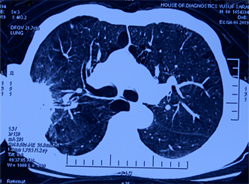- Lung Care Foundation
- 011 - 4225 2328
- lung@lcf.org.in
#BeatLungCancer Campaign
Media Coverage
India Today
July 31, 2018Young non-smokers, women getting lung cancer: Study
Lung cancer is no more restricted to smokers as many non-smokers, including young men and women
Read moreDaily Pioneer
July 31, 2018Young non-smokers, women getting lung cancer: Study
Lung cancer is no more restricted to smokers as many non-smokers, including young men and women, are also falling prey to it
Read moreNews Nation
July 31, 2018How young non-smokers, women get lung cancer
Lung cancer is no more restricted to smokers as many non-smokers, including young men and women
Read moreOn occasion of World Lung Cancer Day, Lung Care Foundation along with Centre for Chest Surgery , Sir Ganga Ram Hospital in its endeavor to improve the grim scenario of Lung Cancer in India, launched the campaign #BeatLungCancer.
The campaign is aimed at increasing awareness about lung cancer among the masses, promoting screening of Lung Cancer in order to detect Lung Cancer at an earlier stage and have timely treatment, and promote stories of strengths of patients in order to inspire others. The disturbing findings of the analysis of 150 patients of Lung Cancer were also released.
Lung care foundation has also partnered with YouWeCan foundation in order to reach the masses and to empower them with the necessary information for proactive detection and treatment of Lung Cancer.
On this occasion there were about 15 Lung Cancer patients who were operated at Sir Ganga Ram Hospital were a part of this support group meeting. Few of these patients were non-smokers in their 20’s and many were long term survivors including one for 15 years.
Considering the increasing incidence of Lung Cancer and it’s disturbing trends, Having realized the immense potential of detecting lung cancer at an early stage using LOW DOSE CT scan screening and its role in reducing deaths due to this dreaded disease as is evident from various studies from around the world, LUNG CARE FOUNDATION in Collaboration with Sir Ganga Ram Hospital and Mahajan Imaging is promoting the use of LDCT in Early detection of Lung Cancer and is providing the service at Sir Ganga Ram Hospital and Various Mahajan Imaging Centres at a heavily subsidized cost. Full subsidy will also be provided for the underprivileged meeting the criteria.
About Lung Cancer Screening and the Role of Low Dose CT Scan
Lung cancer has been the most common cancer in the world for several decades. In both sexes, it is the leading cause of cancer related death killing more than colon, breast and prostate cancer combined.
Despite all the advances in cancer management the overall 5-year survival rate of lung cancer is disappointing with approximately 15 per cent in developed countries and an abysmally low 5 per cent in developing countries.With the air pollution scenario worst to none, we are only going to see an exponential rise in the incidence of lung cancer. These estimates are staggering and points towards an imminent epidemic of Lung Cancer that we are about to face.

The prognosis in patients with Non Small Cell Lung Cancer is primarily dependent on the stage at the time of diagnosis. Unfortunately, most of these cases are diagnosed in later stages which are beyond cure.
Amongst the various methods for early detection, the only one that has proven to reduce the lung cancer mortality is the Low Dose Computed Tomographic Screening as demonstrated in the National Lung Cancer Screening Trial published in the NEW ENGLAND JOURNAL OF MEDICINE in 2011.
The trial demonstrated a 20 percent decrease in Lung Cancer mortality in LDCT detected lung cancer. This modality has not yet been practiced widely in our country and its potential unrealized. We intend to promote the screening for lung cancer by low dose CT in high risk individuals with the aim to diagnose lung cancer early and prevent deaths related to it.
Who Should be Screened for Lung Cancer by Low Dose CT?
Lung cancer screening is recommended for individuals who:
![]() Are between 55 and 80 years of age AND
Are between 55 and 80 years of age AND
![]() Have a 30 or more “pack year” history of smoking** AND
Have a 30 or more “pack year” history of smoking** AND
![]() Either currently smoke or have quit smoking within the last 15 years
Either currently smoke or have quit smoking within the last 15 years
**A pack year is a way of measuring the amount of smoking an individual has done over a period of time. A 30-pack year history of smoking is equivalent to smoking one pack of cigarettes per day for 30 years.
How is Lung Cancer Screening Done & how does it help in reducing Lung cancer mortality?
During Low Dose CT procedure the machine continuously rotates in a spiral motion and takes several 3-dimensional X-rays of the lungs. These X-rays are very detailed and can show early-stage lung cancers that may be too small to be detected by a traditional X-ray. Detection of Lung Cancer at such an early stage translates to better survival through higher chances of curative treatment
Are there any risks involved in CT screenings?
Radiation exposure is always something to consider when going in for a procedure like a low-dose CT scan. Though the radiation exposure from a low-dose CT scan is higher than a typical X-ray, the benefits of receiving such a screening dramatically outweigh the risks of not having the screening, especially if lung cancer is detected. The amount of radiation patients are exposed to during a low-dose CT scan is approximately equivalent to receiving 15 traditional X-rays or 6 months of natural background radiation.








